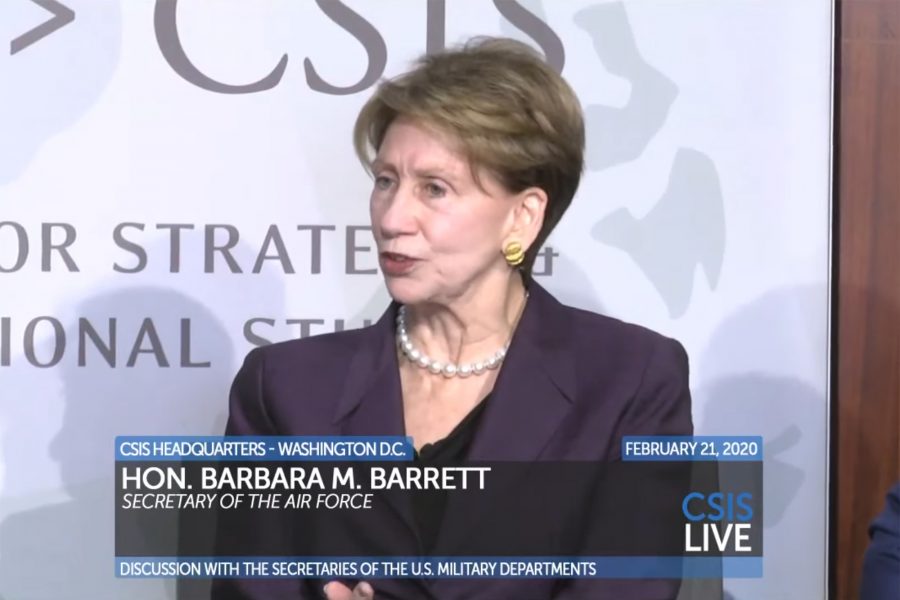Heading into budget negotiation season, the three civilian heads of the armed forces outlined their looming struggles with Capitol Hill at a Feb. 21 Center for Strategic and International Studies panel.
Air Force Secretary Barbara Barrett said it’s harder to convince lawmakers of the merits of investing in space assets and digital networks because their benefits are more abstract than a fighter jet or a tanker: “There aren’t tires to kick.”
“Sometimes it’s a bit of a challenge because many of the things that we need to invest in are not visible, they’re not tangible,” she said. “It may not be associated with a constituency yet. … Similarly, space. It’s ubiquitous but it’s invisible, and therefore, a lot of people don’t appreciate how very engaged each of us are now with space.”
Though the Trump administration rolled out its fiscal 2021 budget request Feb. 10, the Secretaries are already gearing up for the future financial fights—including over the tangible assets that might get cut to make room for the intangibles.
Acting Navy Secretary Thomas Modly said it’s presumptuous to think the Pentagon might get a higher topline in fiscal 2022 and beyond. Lawmakers struck a two-year spending deal to cap the Defense Department’s total funding in 2020 at $738 billion and $740 billion in 2021, but many in the defense community say that’s not enough growth to cover all of the military’s needs.
The services sought to revamp their 2021 funding priorities through “night court” reviews and other shuffles, trading older platforms for newer designs that are better suited for war against advanced militaries. To stay within their financial means, they hope to make their jets, ships, sensors, and other assets work together in new ways that are more cost-effective without losing combat power.
“The entire budget’s being squeezed out by things that are not defense-related,” Modly said. “It’s clearly not defense that’s putting pressure on the topline of our overall budget. So we have to learn better how to work within the means that we have, be more innovative.”
Army Secretary Ryan McCarthy noted that the price tags of modernization and a growing workforce will begin to strain the Army by 2023.
“We face the same changes and challenges,” Barrett added. “We don’t anticipate a topline growth, though we certainly have ways that we could use it.”
The Air Force could funnel extra dollars into new nuclear missiles and the improved B-21 bomber, Barrett said, though the service is trying to reform acquisition, cut inefficiencies, and partner more with the other armed forces so all get a bigger bang for their buck.
“The air and space business is an especially technology-dependent process, and that is a growing part of the economy, a growing part of defense, and a higher expense,” she said.
